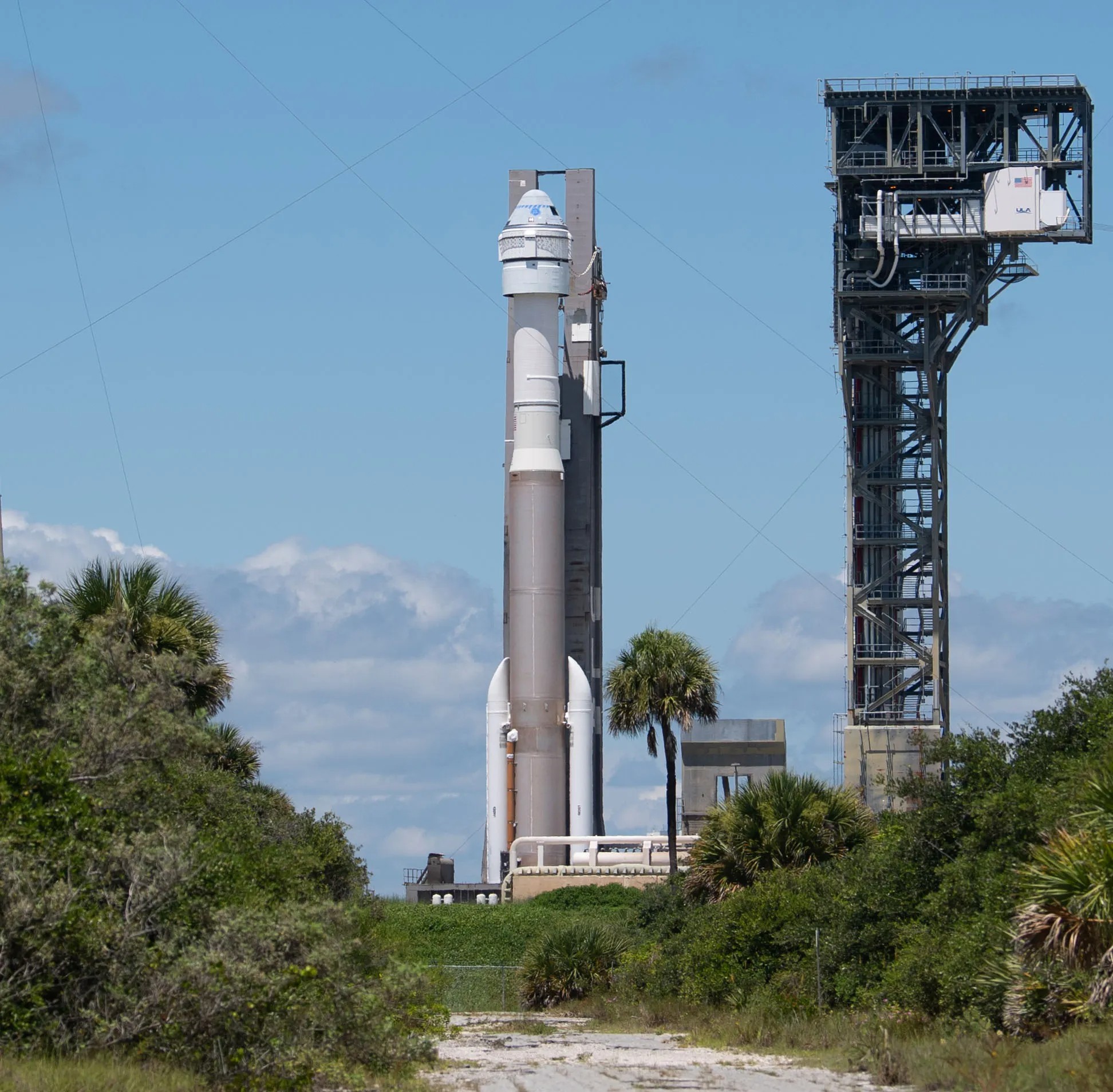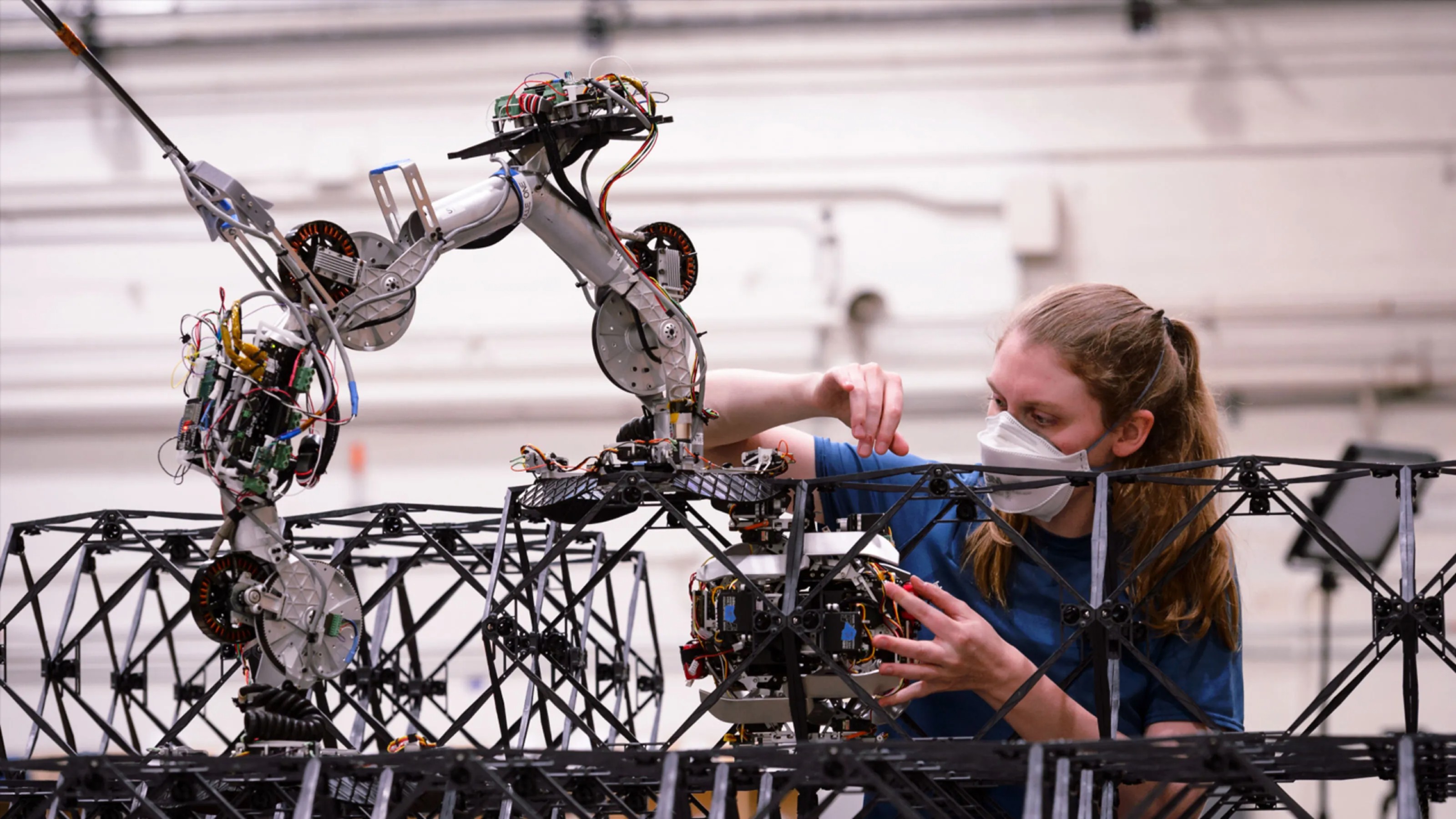T-Minus: SpaceX’s Starship vs. Boeing’s Starliner

- June 2024 has been a momentous month for human space travel with Boeing and SpaceX reaching impressive achievements.
- SpaceX aims to have Starship and its revolutionary landing system fully operational for NASA’s Artemis 3 mission in 2026.
- If Boeing’s Starliner is certified after its latest performance, NASA will have two US-based options for transporting astronauts to the ISS.
This is T-Minus, where Freethink’s Kristin Houser breaks down the biggest developments in space, from new rocket launches to discoveries that advance our understanding of the universe and our place in it. Humanity is reaching new heights in space exploration. Make sure you’re part of the journey by subscribing here.
June 2024 has been a momentous month for human space travel.
First, Boeing delivered two astronauts to the International Space Station (ISS) in its Starliner capsule on June 5, marking the spacecraft’s first mission with people on board.
The very next day, SpaceX successfully recovered both stages of its Starship rocket system during a test flight — a milestone that brings the in-development spacecraft one step closer to transporting people to the moon and Mars.
In light of these achievements, let’s take a closer look at these two spacecraft, how they came to be, and what their development tells us about the future of space travel.
Starship

- Configuration: Starship upper stage (SpaceX) / Super Heavy lower stage (SpaceX)
- Total height: 121 meters
- Crew capacity: 100 people
- Payload to LEO: 100-150 tons
- Price to LEO: $100 per kilogram
- Reusability: Both stages
- Cost so far: $5 billion
The purpose: Starship is the biggest, most powerful rocket ever developed, and SpaceX’s plan is to use it to deliver massive payloads — including up to 100 people at a time — to low-Earth orbit, the moon, Mars, and beyond. A version of the spacecraft will also be used to transport NASA astronauts to the lunar surface.
Five major milestones:
2005 – SpaceX CEO Elon Musk shares his vision to eventually build a massive rocket system capable of putting 100 tons of payload into low-Earth orbit. At the time, the company had yet to fly a single rocket.
2012 – SpaceX announces plans for a rocket surpassing the capabilities of its powerful Falcon 9. Initially called the “Mars Colonial Transporter,” SpaceX eventually lands on “Starship.”
2020 – SpaceX “hops” a Starship prototype for the first time, sending the spacecraft about 150 meters into the air and almost straight back down again. This test does not include the Super Heavy lower stage that will complete the Starship system.
2022 – NASA awards SpaceX a $2.89 billion fixed-price contract to develop a version of Starship that could be used to transport astronauts from a capsule in the moon’s orbit down to the lunar surface. A $1.15 billion contract for a second lander follows in 2023.
2023 – An integrated Starship system (the Starship upper stage atop a Super Heavy lower stage) successfully clears the launchpad on its first attempt, but the test flight ends after four minutes when an anomaly triggers the spacecraft’s self-destruct system.
The latest: The June 6 launch was the fourth test flight of an integrated Starship system, and during each flight, it has hit new milestones. This time, the upper stage survived reentry, and the lower stage completed a controlled splashdown. These two achievements suggest that full reusability — crucial to making the huge rocket cost effective — will be possible.
What’s next? SpaceX’s goal is to perform a fifth test flight in late July. This time, the company wants to try catching the Super Heavy lower stage using a “Mechazilla” launch tower. If this works, according to SpaceX CEO Elon Musk, a Starship could be launched again within just one hour of landing.
The bottom line: NASA is targeting a September 2026 launch of the Artemis 3 mission that will require the Starship landing system. Many experts are skeptical that it’ll be ready by then, but SpaceX plans to conduct several more test flights in 2024 to help it meet the deadline.
Any wait for a fully operational Starship will be worth it, though — the massive rocket has the potential to dramatically lower the cost of putting people and payloads anywhere in space, which could usher in a brand new era.
Starliner

- Configuration: Starliner capsule (Boeing) / Dual Engine Centaur upper stage (ULA) / Atlas V N22 lower stage (ULA)
- Total height: 52.4 meters
- Crew capacity: 7 people
- Payload to LEO: 14.6 tons
- Price to LEO: $90 million per seat
- Reusability: Capsule only
- Cost so far: $6 billion
The purpose: NASA has paid Boeing $4.5 billion to develop Starliner so that it can be used to transport astronauts to and from the ISS. At the time it issued the fixed-price contract, it was relying on Russia for rides at a cost of about $80 million per seat. Boeing also plans to provide Starliner rides to people visiting Orbital Reef, Blue Origin’s in-development commercial space station.
Five major milestones:
2010 – Boeing unveils designs for the Crew Space Transportation 100 (CST-100) and announces that it has won an $18 million award from NASA to continue developing the system through the agency’s Commercial Crew Program.
2014 – NASA awards Boeing a $4.2 billion contract to build three CST-100 spacecraft. At the same time, SpaceX receives a $2.6 billion contract to build its Crew Dragon capsule. Uncrewed and crewed test flights of the CST-100 spacecraft were expected to take place in 2017.
2019 – An anomaly during the first uncrewed test flight of Boeing’s capsule, now called the CST-100 Starliner, prevents it from rendezvousing with the ISS as planned.
2022 – Boeing conducts a second uncrewed test flight of Starliner on its own dime. This time, the spacecraft successfully docks with the ISS before returning to Earth six days after launch.
2023 – The first crewed test flight of Starliner is delayed multiple times throughout the year until Boeing finally announced in August that it wouldn’t happen until March 2024 at the earliest. That date gets delayed repeatedly, too.
The latest: While Boeing did manage to successfully transport astronauts Butch Wilmore and Suni Williams to the ISS on June 5, engineers discovered five helium leaks in the spacecraft during the trip. NASA has repeatedly delayed the astronauts’ return trip in the capsule while Boeing engineers study the problem. They’re currently expected home in July.
What’s next: Once this crewed test flight wraps up, Boeing’s next step will be making any final adjustments to Starliner needed to obtain NASA certification. Once that happens, it can begin providing NASA astronauts with rides to the ISS. The first of those is currently scheduled for early 2025, but the hiccups with the crewed test flight could lead to delays.
The bottom line: Helium leaks aside, NASA and Boeing appear generally satisfied with Starliner’s performance during the crewed test flight so far, and neither anticipates Boeing having to redo the test in order to move toward certification.
Once it’s certified, NASA will have two US-based options for transporting astronauts to the ISS (SpaceX got its Crew Dragon certified in 2020).
The big picture
Starliner and the Starship moon lander are examples of a growing trend at NASA: the issuance of fixed-price contracts.
Under fixed-priced agreements, NASA agrees to pay a certain price for a spacecraft, period. Any cost overruns are the responsibility of the contractor. In the past, NASA contracts were typically “cost-plus,” meaning the agency was on the hook to pay for any additional development costs.
Those overruns can seriously add up. In 2014, NASA awarded $7 billion in cost-plus contracts to Boeing and other vendors to build its Space Launch System (SLS), a rocket even more powerful than Starship, but after huge delays and blown budgets, NASA is now on the hook for more than $13 billion — almost twice what it planned.
While fixed-price contracts can’t necessarily prevent delays during development (as evidenced by Starliner), putting the burden of budget overruns on contractors saves money — the Commercial Crew program, for example, has reportedly saved NASA $20 billion to $30 billion.
This competitive approach drives innovation [and] brings down costs.
Lisa Watson-Morgan
Because NASA knows exactly what its financial commitment will be with a fixed-price contract, it can feel more confident taking a chance on an aerospace company it hadn’t worked with before, like it did with SpaceX in 2014.
Knowing the cost upfront also enables NASA to issue contracts to multiple vendors for the same spacecraft without worrying about budgets exploding. It already did this with the Commercial Crew program, and it’s currently doing it with its moon lander — a year after awarding SpaceX the Starship contract, it contracted Blue Origin to build a lander, too.
“Having two distinct lunar lander designs, with different approaches to how they meet NASA’s mission needs, provides more robustness and ensures a regular cadence of moon landings,” said Lisa Watson-Morgan, program manager for NASA’s Human Landing System.
“This competitive approach drives innovation, brings down costs, and invests in commercial capabilities to grow the business opportunities that can serve other customers and foster a lunar economy,” she continued.
This article was originally published by our sister site, Freethink.





